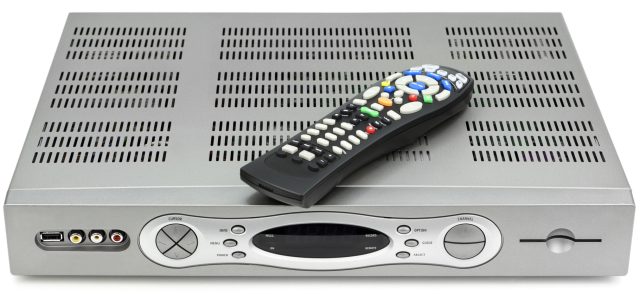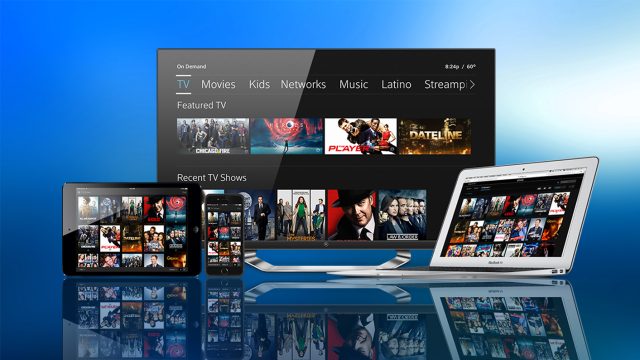It's no secret that cable companies hate the Federal Communications Commission plan to make TV channels more widely available on third-party devices and applications.
The proposal would force pay-TV providers to make channels and on-demand content available to third parties, who could then build their own devices and apps that could replace rented set-top boxes. Supporters of the proposal say Comcast and other cable companies just don't want to sacrifice revenue they get by renting set-top boxes to their customers.
But Comcast is willingly giving up some of that rental money by developing its own application for third-party devices such as the Roku, Samsung TVs, and the Nvidia Shield. The Comcast application isn't quite what the FCC wants, since device makers would need Comcast's permission to deploy the app. Nonetheless, Comcast's own initiative could also save customers money by freeing them from rented set-top boxes.
So why is Comcast opposed to the FCC plan? Among Comcast's publicly stated reasons, the company claims that the FCC plan is such a mess that it would be nearly impossible to comply with.
Could Comcast be making a valid point? FCC officials who have heard Comcast's arguments told Ars that the company is exaggerating the difficulty of complying. Comcast critics also say the company is wrong. But let's take a look at what Comcast is saying.

In a recent meeting with FCC officials and a subsequent ex parte filing, Comcast argued that "running our network code directly on third-party devices without our application [is] not feasible." To get more specifics on these technical concerns, we requested an interview with Comcast. We ended up speaking with a few Comcast executives "on background," meaning we can't name them but can paraphrase their comments.
In short, Comcast says the FCC and Chairman Tom Wheeler have misunderstood how modern TV systems work. The FCC proposal (full text), which could be finalized before the end of this year, instructs pay-TV providers to make three "information flows" available to any third-party device or application. A "service discovery" flow includes information about what programming is available to a cable TV subscriber, including channel listings, the shows on each channel, and video-on-demand listings. An "entitlements" information flow would tell third-party devices what cable subscribers are allowed to do with content, such as whether recording is permitted. The third flow, "content delivery," is the video programming itself and information needed to make it accessible to people with disabilities.
Comcast executives say that there is no such thing as an "information flow" in their network—and that they don't know how to provide these information flows. Instead of information being delivered in flows or streams, it's all data in servers that is sent upon request, Comcast says. Rather than a one-way stream of information, it's all based on an "ask-and-fetch" model according to the company.
Cable TV networks traditionally used a broadcast model in which video is sent to a user who simply receives the content, Comcast executives noted. But modern, IP-based systems are two-way. A consumer requests information by clicking a button on a remote control or tapping an icon in an app, and the request goes to Comcast servers, which figure out what video should be delivered. Comcast's X1 cable TV system is IP-based, though some customers are still on older, QAM-based equipment. Eventually, Comcast says all of its customers will be moved to X1.

Comcast says the two-way nature of its systems is what makes it difficult to provide access to any third party that wants it. Comcast's own applications for set-top boxes and third-party devices have the appropriate "network software" that can interact with Comcast's back-end servers, but the company says it has never contemplated how to separate that network code from its applications.
Another complication is that Comcast says its TV network includes more than 100 "subsystems" or "microservices," and each request a user sends to Comcast gets processed by several of them.
As an example, a Comcast executive said a customer might search for "free children's movies." But the list of free movies would be different for two customers with two different subscription levels. A subsystem is needed to figure this out. Another subsystem described by Comcast keeps track of how far into a movie a customer is, so the customer can pick up at the same spot when they switch to watching it on a different device.
According to Comcast, the existence of all these subsystems makes it nearly impossible to comply with the FCC proposal. The subsystems are frequently updated with new features and bug fixes, and Comcast claims that it would have to either remove features or figure out how to update the "information flows" every time it updates one of the subsystems, disrupting the process it uses to improve its service.
FCC: That's just not true
A senior FCC official who also spoke to Ars on background disputed Comcast's arguments.
The FCC uses the phrase "information flows" in lieu of a better term, but ultimately it's the very same information that Comcast and other TV providers already deliver to their own set-top boxes and applications, the official said.
The FCC is aware that TV systems can be either one-way or two-way and that modern systems use IP technology, the official said. TV providers with IP-based systems can comply with the proposed rules by providing an API that allows third parties to request and receive video and related information according to the FCC. The API doesn't need access to every feature in Comcast's cable system—it just needs to know what a customer subscribes to and the other information required by the FCC's proposed rules.
(Comcast officials, when asked about using an API to give third parties access to content, claimed that they don't know how to make a single API that could provide everything the FCC wants.)
The FCC is not telling TV operators exactly what technology to use, rather the group plans to require the use of open standards. TV operators would be allowed to use "any published, transparent format that conforms to specifications set by an independent, open standards body," the proposal said. Technically, each TV operator could choose a different standard, but the FCC expects that the industry will settle on a small number of methods. Ultimately, this would replace the CableCard regime that uses physical cards to connect third-party devices like TiVos to cable networks. Under the proposed system, third parties that access the information flows would be required to deploy content protection systems and respect licensing terms regarding copyright and entitlements.
Whatever technology they use, operators would be required to provide the video listings and entitlement data in a standardized format. If they prefer, operators can continue to use their own proprietary systems for delivering content to their own set-top boxes and applications, as long as they also provide access to the content in a way that third-party devices and apps can understand. Comcast can thus continue to roll out bug fixes and new features to its various subsystems without updating the required "information flows," the FCC official said.
reader comments
222